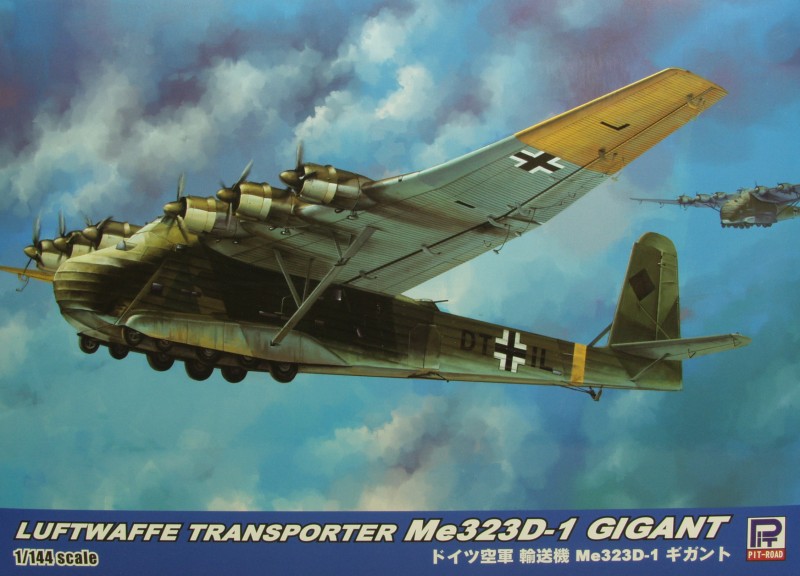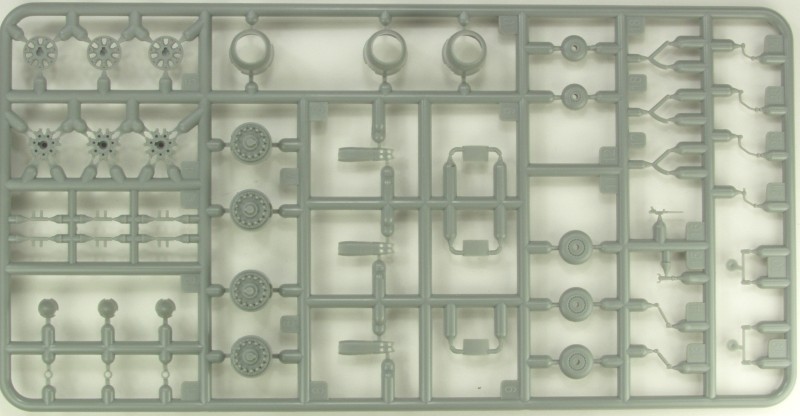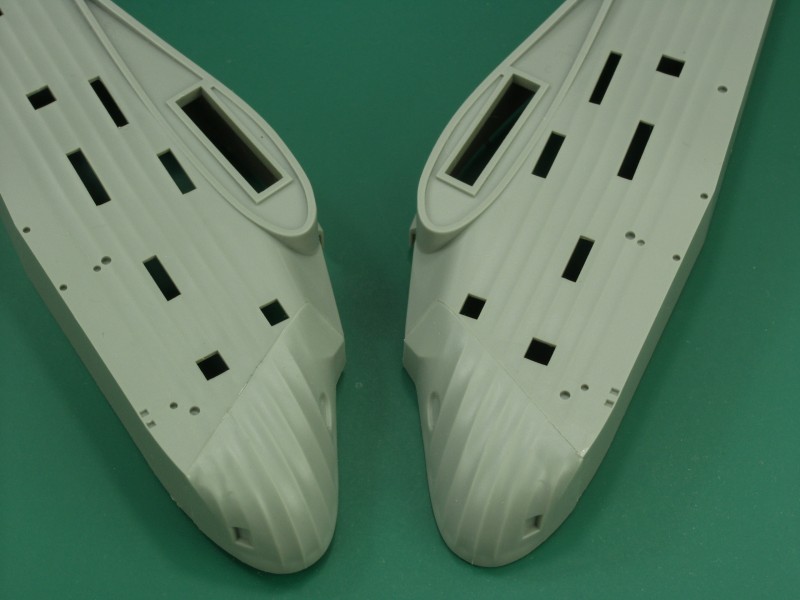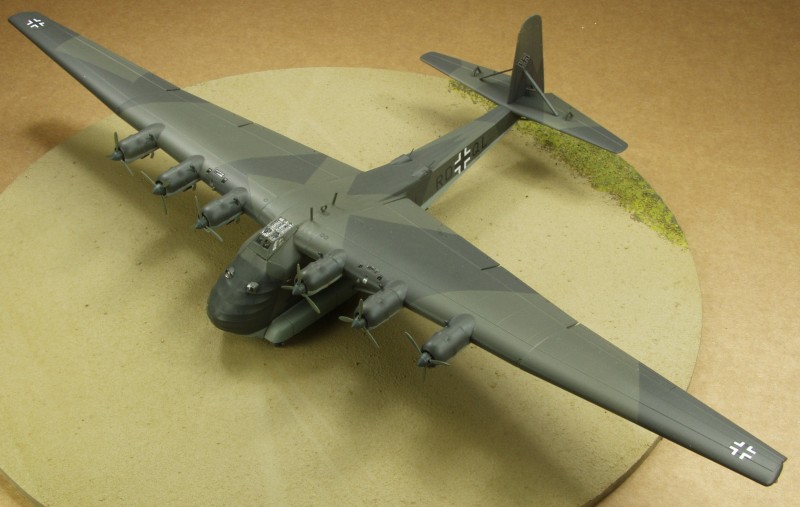
Me 323D-1


Me 323D-1

The Me 323 was the result of a 1940 German requirement for a large assault glider in preparation for Operation Sea Lion, the projected invasion of Great Britain. The DFS 230 light glider had already proven its worth in the Battle of Fort Eben-Emael in Belgium (the first ever assault by gliderborne troops), and would later be used successfully in the invasion of Crete in 1941.
However, in order to mount an invasion across the English Channel, the Germans would need to be able to airlift vehicles and other heavy equipment as part of an initial assault wave. Although Operation Sea Lion was cancelled, the requirement for a heavy air transport capability still existed, with the focus now on the forthcoming Operation Barbarossa, the invasion of the Soviet Union.
On 18 October 1940, Junkers and Messerschmitt were given just 14 days to submit a proposal for a large transport glider. The emphasis was still very much on the assault role: the ambitious requirement was to be able to carry either an 88 mm gun and its half-track tractor, or a Panzer IV medium tank. The Junkers Ju 322 Mammut reached prototype form but was eventually scrapped due to difficulties in procuring the necessary high-grade timber for its all-wood construction and, as was discovered during the Mammut's only test flight, an unacceptably high degree of instability inherent in the design. The proposed Messerschmitt aircraft was originally designated Me 261w — partly borrowing the designation of the long-range Messerschmitt Me 261, then changed to Me 263 (later re-used for Messerschmitt's improved rocket fighter design) and eventually became the Me 321. Although the Me 321 saw considerable service in Russia as a transport, it was never used for its intended role as an assault glider.
Early in 1941, as a result of feedback from Transport Command pilots in Russia, the decision was taken to produce a motorized variant of the Me 321, to be designated Me 323. It was decided to use French Gnome et Rhône GR14N radial engines rated at 1,164 hp for take-off as used in the Bloch MB.175 aircraft; using French engines was thought to place no burden on Germany's over strained industry.
Initial tests were conducted using four Gnome engines attached to a strengthened Me 321 wing, which gave a modest speed of 130 mph – 50 mph slower than the Ju 52 transport aircraft. A fixed undercarriage was fitted, which comprised four small wheels in a bogie at the front of the aircraft with six larger wheels in two lines of three at each side of the fuselage, partly covered by an aerodynamic fairing. The rear wheels were fitted with pneumatic brakes, and could stop the aircraft within 660 ft.
The four-engine Me 323C was considered merely a stepping stone to the six-engine D series; it still required the five-engine Heinkel He 111Z Zwilling or the highly dangerous, "vic-style" Troika-Schlepp formation of three Messerschmitt Bf 110 heavy fighters and under wing mounted Walter HWK 109-500 Starthilfe rocket assisted takeoff units to get airborne when fully loaded, but it could return to base under its own power when empty. This was clearly not much better than the Me 321, so the V2 prototype became the first to have six engines and flew for the first time in early 1942, becoming the prototype for the D series aircraft.
The selection of the six engines, and their specific placement on the wing's leading edge, were fitted to reduce torque – a trio of counterclockwise rotation engines mounted on the port wing, and a trio of clockwise rotation engines on the starboard wing as seen forward from behind each engine, resulting in the props rotating "away" from each other at the tops of their arcs.
Maximum payload was around 12 tonnes, although at that weight the Hellmuth Walter Werke-designed Walter HWK 109-500 Starthilfe RATO (rocket assisted takeoff) units used on the Me 321 were required for take off. The RATOs were mounted beneath the wings outboard of the engines, with the wings having underside fittings to take up to a total of four RATO units. The cargo hold was 36 ft long, 10 ft wide and 11 ft high. The typical loads it carried were: One 15 cm FH18 field artillery piece (5.5 ton) accompanied by its Sd.Kfz.7 halftrack transport vehicle (11 ton); two 4 ton trucks; 8,700 loaves of bread; an 88 mm Flak gun and accessories; 52 drums of fuel; 130 men or 60 stretchers.
Some Me 321s were converted to Me 323s, but the majority were built as six-engine aircraft from the beginning; early models were fitted with wooden two-blade propellers, which were later replaced by metal, three-blade variable-pitch versions.
The Me 323 had a maximum speed of only 136 mph at sea level and speed dropped with altitude. For defensive armament, it was armed with five 13 mm MG 131 machine guns firing from a dorsal position behind the wings and from the fuselage. They were manned by the extra gunners, radio operator and engineers.
The Kit















The
clear
parts are clear but rather thick, I don't think the thickness
will be all that noticeable. The first sprue contains lots and
lots of tiny windows.


The
decals are thin appearing and have a matte finish. They are all
nicely printed and well registered. The letters for the bottom
wing are combined with the wing wing crosses resulting in a
massive amount of opportunities for silvering, my advise would
be to cut them apart and apply separately. No clue on the sheet
as to who printed them so I can't speak as to how well they
might work. Markings for three aircraft are supplied, aircraft
from Germany, Tunis and Corsica in 1943. The Swastika on the
main sheet is assemble type but a second small sheet with full
Swastikas is also supplied, nice !

The
instructions consist of a 7" x 10 1/4" 12 page
booklet stapled at the spine. All verbiage is
printed in Chinese and English. The front page has
a brief history with basic aircraft
specifications, basic safety instructions like
don't put paint or glue in your mouth, an
icon chart and the start of a parts map. The
second page has the balance of the parts map which
includes a decal sheet showing decals not used.
Page three starts the assembly which continues
through page twelve in 16 steps. Assembly diagrams
are of the cad style in halftone and are nicely
sized and easy to follow. Options are noted where
required. Color call outs are present throughout
the assembly, black rectangles with a white
number. These refer to the paint chart which is
provided as a separate sheet. The color chart
along with the painting and marking information is
provided on an 11" x 16" glossy page printed in
color on one side. The color chart lists the
colors by a 'C' number which relates to GSI Creos
Mr. Color paints. The generic color or RLM colors
are listed for these as well.
After Market Goodies
There are none available that
I'm aware of at the time of this review but with all the tiny
windows a masking sheet would be most welcome.
Conclusions
This kit looks very nice in the box, if it goes
together as nice as it looks it will make a nice addition to
anyone's collection. As some one whose display case is rapidly
running out of room it is most welcome in this smaller scale.
Links
to kit build or reviews
There were none found at the time this review
was posted.
References
"Warplanes
of the Third Reich" by William Green and Wikipedia
Back to the Other Scales
Page



















